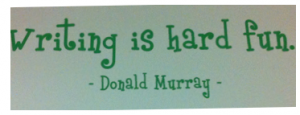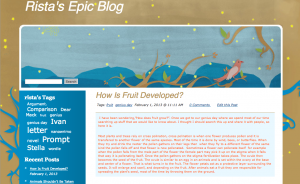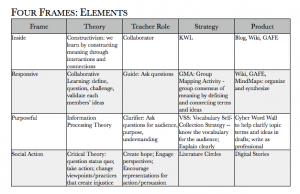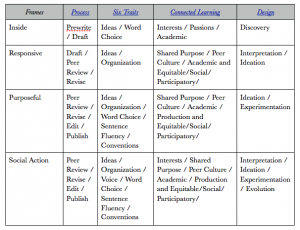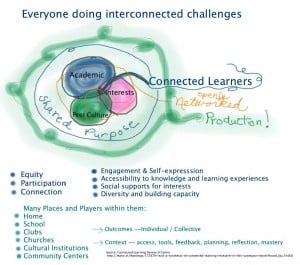“Writing is hard fun.” Donald Murray
Throughout the last century, writing instruction has evolved from basic handwriting to five-paragraph-essays to writing workshop to writing process to digital writing with media. Writing teachers build on the work of James Moffett, Jerome Bruner, Lucy Caulkins, Donald Graves, Donald Murray, Janet Emig, Peter Elbow, Judith Langer, Nancie Atwell, Ralph Fletcher, Robert Marzano, Ken Macrorie, Harvey Daniels, Will Richardson and Troy Hicks.
Their work in writing is rooted in social learning and educational psychology through the eyes of John Dewey, Lev Vygotsky, R. C. Anderson, Jean Piaget, Paulo Freire, and Seymour Papert.
As the internet became interactive, social, and productive, David Warlick, Marc Prensky, Daniel Pink, Henry Jenkins, Pew Research Center, and the National Writing Project contributed to extending writing into a broader literacy: communication literacy through text, image, audio, visual, and social interaction.
What came before is now evolving. The Common Core State Standards embeds this communication literacy with online media throughout its document.
What does this mean?
Getting Started
Consider your own writing (and reading) in a normal day. Have you:
- Checked and responded to email?
- Texted?
- Checked and responded to Facebook?
- Check and responded to Twitter?
- Checked and responded to a Google Plus community?
- Googled?
- Received a YouTube video link?
If so, you are “communication literate,” or at least passively.
If you are a teacher, consider this: 95% of all teens use the Internet. Students of lower income families have less opportunities to do so. See Pew Internet Research on Teen Internet Use.
What does this mean?
If you are a teacher, this means your students expect to use the Internet, socially, interactively, creatively. If you teach in schools with students in lower income brackets, your teaching with technology helps them close the equity gap.
What does this mean for writing?
Another Framework
Liz Stephens and Kerry Ballast (Liz Stephens and Kerry Ballast (2011). Using Technology to Improve Adolescent Writing: Digital Make-Overs for Writing Lessons) present a new paradigm for writing lessons that includes four frames, four lenses to view process writing and assignments.
Four Frames
- Inside Writing: investigating and discovering a topic by connecting with text, images, sounds, videos, etc.
- Responsive Writing: communicating face to face and online to collaborate through interactions and feedback to make sense of a topic by defining, labeling, questioning, challenging, and validating topic information
- Purposeful Writing: investigating and presenting one’s own interpretation of the topic for an audience to review
- Social Action Writing: exploring and collaborating to create a multimedia production to move others to action using persuasion with digital tools that emphasize the message
A Comparative Visual
As a teacher of digital learners, I see how this paradigm for writing compares with previous writing strategies: writing process and six traits of writing. I also see how it fits with design theory and connected learning. How do these various “frames for writing” fit together?
Over the past two years I have noticed that I start with connecting students to topics — to engage their interests in the ideas about which we will write (inside writing). As we draft ideas and responses, we share ideas and compare information and vocabulary, adding or revising as necessary (responsive writing). With ideas in hand over different days and topics, students choose something of interest to explain to a chosen audience using elaborative strategies and precise vocabulary (purposeful writing). In seventh grade especially, we practice persuading others to take action on a topic, usually a prompt practice for our state test (an attempt at social action writing).
With this framework from Stephens and Ballast, I can now refine our lessons and choices and reflect on the process and results. I can continue the “connected learning” strategies from the #clmooc and further efforts to add to #makecomp.
Have you experienced the four frames for writing in this way? What has been your experience?
Bibliography
Liz Stephens and Kerry Ballast (2011). Using Technology to Improve Adolescent Writing: Digital Make-Overs for Writing Lessons
Design Process
Writing Process

